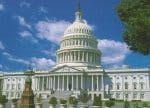Where have all the lab workers gone?
Lab business is booming, but there are not enough laboratorians to do the work. The U.S. Bureau of Labor Statistics reports that roughly 10 billion lab tests were performed in 2001, and demand is expected to climb.1 Unpublished data from a recent straw poll conducted by APHL shows an 8.6% average vacancy rate for state laboratory testing personnel. ASCPs 2002 wage and vacancy survey found that average regional vacancy rates for staff-level medical technologists ranged from 6.0% to 10.2%.2
These figures may appear deceptively low. State-authorized staff positions often do not keep pace with the public health lab workload. Kentuckys state lab is recruiting for two positions but due to budget constraints eliminated 10 which were not counted as vacancies.3 Any vacancies likely represent a true reduction in lab capacity. ASCPs survey indicated increasing use of temporary and/or noncertified personnel to fill clinical lab positions.1
Bioterrorism threats, an aging healthcare-savvy population, and the stream of emerging and re-emerging infectious diseases underscore the importance of a strong national laboratory system. In public and private sectors, perhaps the most worrisome trend is the shrinking pool of future lab professionals. The pending retirement of highly skilled laboratory leaders compounds the understaffing problem. An APHL study anticipates an average of 13 vacancies in state public health laboratory director positions by 2006. About 66% of current directors describe that candidate pool as being either not, or only marginally, adequate to meet future needs.4
By October 2000, evidence existed that laboratory reductions already impaired the ability of state and local authorities to identify biological agents.5 This was validated during the 2001 anthrax crisis, when much routine public health lab testing was halted because key staff was diverted to testing for
B. anthracis. Connecticuts state lab brought in volunteer microbiologists, and New York Citys lab borrowed staff from local private clinical labs to augment its workers.6,7 Even the relatively mild U.S. SARS outbreak last winter strained lab capacity.8
The Bureau of Labor Statistics estimates that 13,200 new medical technologists and lab technicians will be needed yearly through 2010 to replace retiring workers and meet rising demands for laboratory tests.1 Yet, fewer than 5,000 individuals are graduating from accredited training programs each year.1 In 1999, the ASCP certified fewer med techs than in 1959 (2,216 and 2,349, respectively).9 Declining numbers of students interested in lab science led to the closure of training programs approved by the NAACLS from 1,000 to about 500 today.9
If we are to minimize the looming worker shortage, we must take steps to make laboratory careers more attractive: better wages, improved opportunities for training and advancement, measures to address biosafety risks, relocation assistance, and, very importantly, increased recognition for lab technicians and scientists. The scarcity of qualified laboratorians has already begun to place an upward pressure on salaries, which are rising just ahead of inflation.1
While hospitals and other private clinical labs can offer sign-on bonuses, flexible schedules and other work incentives, public health laboratories, constrained by government employment practices, are forced to consider innovative solutions. APHLs fellowship program introduces recent college graduates to the practice of public health laboratory science. The association is also working to expand continuing education opportunities for current public health laboratorians through its National Center for Public Health Laboratory Leadership and National Laboratory Training Network
(www.nltn.org). Some public health laboratories have begun collaborating with universities to provide lab internships to undergraduates and lab rotations for medical students yet, more must be done to interest younger students in laboratory science.
Without qualified personnel to process routine diagnostic tests, to support national disease surveillance and to identify the next novel pathogen, the health of Americans will surely suffer. Everything is riding on our collective efforts to assure a robust national laboratory system.
References
- ASCP releases new wage and vacancy report on clinical laboratory workforce. ASCP. Chicago, IL. July 24, 2003.
- American Society of Clinical Pathologists. 2002 wage and vacancy study – preliminary results. At
www.ascp.org/bor/center/center_research.asp. Accessed on August 13, 2003. - Isaacs B. State health lab on fast track in identifying bioterror germs.
Lexington Herald-Leader. July 23, 2003;1. - Schoenfeld E, Banfield-Capers SY, Mays G. Who will run Americas public health labs? Educating future laboratory directors.
Association of Public Health Laboratories. Washington, DC. February 2002. - Smithson A, Levy L. Ataxia: The chemical and biological terrorism threat and the U.S. response.
The Henry L. Stimson Center. Washington, DC. October 2000. - Annual meeting explores labs readiness for public health emergencies.
The APHL Minute. July-August 2003:12,14. - Connecticut public health laboratory recognized for anthrax testing; preparing for future biological, chemical terror threats.
The APHL Minute. September-October 2002:4,17-18. - State public health laboratories put to the test with SARS.
The APHL Minute. July-August 2003:1,4-5. - Painter PC. What has happened to all the techs? At
www.ivdtrials.com/TechStaff.htm. Accessed on August 14, 2003.
Scott J. Becker is executive director of the Association of Public Health Laboratories (APHL). Becker served at WHO in Geneva, Switzerland, coordinating an international conference on the integration of HIV/AIDS into the health curriculum for professional schools. His BS and MS degrees are from the University of Marylands College of Business and Management.
As has been the history of MLOs Washington Report, this space will be
devoted in 2003 to keeping readers abreast of ongoing issues and new legislation affecting the clinical laboratory and its professional managers and technicians. If there is a particular legislative question or a legislative topic of special interest to your organization, please e-mail:
[email protected].
October
2003: Vol. 35, No. 10
© 2003 Nelson Publishing, Inc. All rights reserved.



